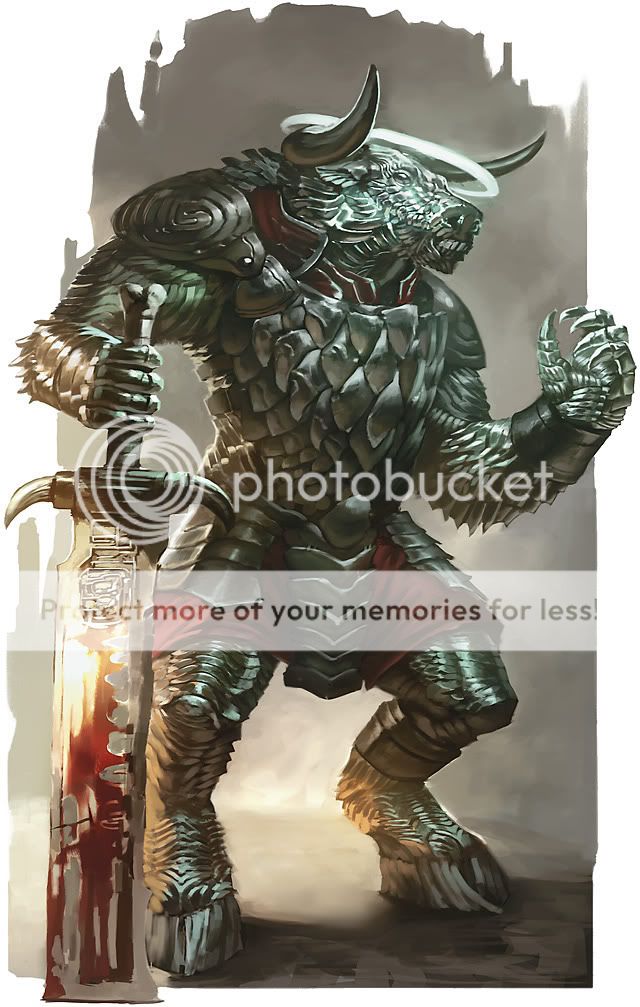It could also be considered a combination with centaur instead, due to mistakenly assuming that taur means "a centaur-like creature" rather than a bull. Interestingly enough, some ancient art of Medusa depicts her as a centauress.
D&D made the weird choice of depicting a toxic iron bull as a "gorgon," despite more closely resembling the mythical catoblepas, so to avoid confusion I will use the unambiguous terms medusa and iron bull instead.
I have seen the word gorgotaur used rarely in a couple examples. In the roleplaying game Mazes & Minotaurs, the gorgotaur is a heavily mutated or primordial minotaur; among other features, it has hooves instead of hands (examples @ grieksegids.nl and clipart.com). In the supplements Encyclopaedia Arcane: Crossbreeding and Monster Geographica Underground, a gorgotaur is a hybrid of minotaur and iron bull. Speaking of hybrids, Book of Templates Deluxe Edition 3.5 introduced a half-iron bull or "demigorgon" template.
The name may be analyzed in other ways besides the three mentioned above. Perhaps a combination of an iron bull and a centaur or bucentaur? Maybe a combination of minotaur, iron bull and (bu)centaur? Maybe a combination of a medusa (i.e. Greek gorgon) and a minotaur?
So that gives us about six varieties to start with: a centauress with snakes for hair who gazes turns onlookers to stone, a grotesque and bestial minotaur, a minotaur with iron hide and toxic breath, a centaur whose lower body is a bull with iron hide and exhales toxic fumes, the preceding with the head of a bull, and a minotaur with a mane of snakes whose gaze turns onlookers to stone.



No comments:
Post a Comment